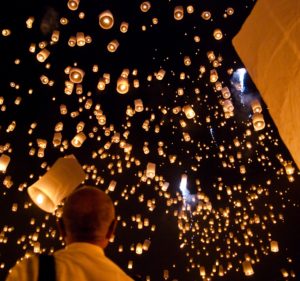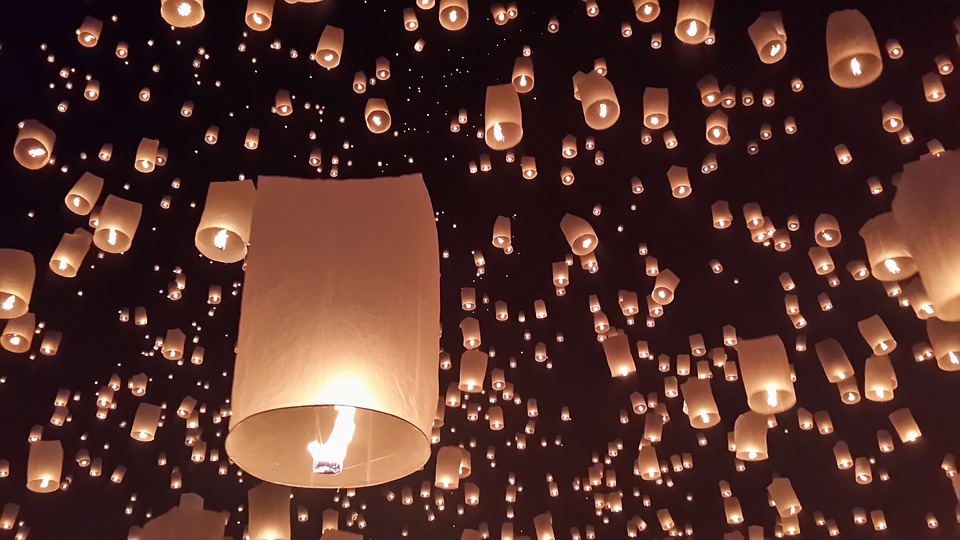It is night. The moon is bright up above. As you tiptoe down the hillside to the river, you catch your breath at the sight that you behold. The river is alive with a million brightly burning candles. They dance upon the water as far as the eye can see. As you draw nearer you see dark shadows emerge as human shapes crouching beside the water’s edge to gently release their small offerings, candlelit Krathong, to the genii of the water. As each small vessel is released, it floats away joining the long line of tiny flames moving down the river.
This is the festival of Loy Krathong which takes place in the twelfth month of the lunar year in Thailand, on the night of the full moon. At this time the river and canal levels are high, and the weather is clear for the people to hold their annual celebration.
What is Loy Krathong? Why did it originate?
The term translates directly enough. Loy means ‘to float’ and Krathong means a floating vessel (traditionally lotus-shaped) that is decorated with banana leaves. In recent years the cup or vessel has been formed from styrofoam, but this practice is being reversed due to environmental concerns. Origins of the holiday are less direct and more shrouded in mystery. In 1863 a story was written by King Rama IV to tell the story of Loy Krathong. The story rose from legend, and it tells the tale of Noppamas, a beautiful lady, a daughter to a wise and accomplished man whose beauty and intelligence was such that people said only a king would deserve her hand. 
The king was very curious when he heard songs about Noppamas, and he sought her out and married her. She married the king but kept the traditions of her Brahmin religion even after her wedding to the Buddhist king. The king requested that she accompany him to a water procession, and she complied, after first fashioning a decorative Krathong to pay tribute to the water genii of her religion during the journey. She tried to release it surreptitiously, but the vessel drew so much attention that the king went to examine it. He was so enchanted with the ritual, that he declared everyone would make Krathongs at this time every year and float them down the river for the pleasure of Buddha. He said that all the blessings bestowed by Buddha for this ritual should go to the River Genii of Noppama’s faith.
Cultural anthropologists believe the festival drew its origins directly from the Hindu festival Divali in India.
The holidays take place at the same time of year, and both feature candles on the water; Krathongs in Thailand, floating lanterns in India.
Wherever the holiday originated, the custom is beautiful. Children and adults construct their Krathongs, decorating them with banana leaves, adding the traditional candle and three incense joss-sticks. People also add locks of hair, fingernails or coins for blessings. When you go to release your Krathong, you make a wish and then launch it. Your sins and bad luck float away with it, down the river, and this clears the way for a joyful new year.
In the large cities, they offer fireworks during the festival, and there are beauty contests in honor of Queen Noppamas. If you visit Thailand in November, consider celebrating Loy Krathong in a smaller region where street lights and smoke do not interfere with the beauty of candlelight on the canals.
Here are some articles I used as reference materials, they include pictures and the full story as told by King Rama IV about the first Loy Krathong and Queen Noppamas.





